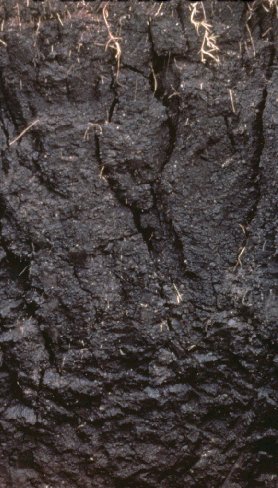Yesterday I
met a final year undergrad at the bookshop. We got talking then I asked him
about his final year project research. He told me he was working on “the
stabilization Black Cotton Soil” …using groundnut haulms. Black cotton soil! Although I’m a graduate student completing my master’s
degree in soil science, I was hearing those words for the first time. Uncharacteristic
of a ferret, I didn’t bother myself about these soils, until today when I
accidentally found the same term in the book I was reading- Footprints in the Soil. Black cotton soil is actually the old
term for the soil now known as Vertisols. In 1791, the outstanding natural
scientist and observer of the subtropical milieu of 18th century
United States, William Bartram (1739-1823), published his book entitled “Travels through North and South Carolina,
Georgia, East and West Florida, the Cherokee Country, the Extensive Territories
of the Muscogulges, or Creek Confederacy, and the Country of the Chactaws”.
While Bartram was describing his travels across Black Bell (West Florida and some part of Lousiana), he observed
that the upper stratum of the soils found in these plains are perfectly black,
soapy, and rich, especially after rains, and renders the road very slippery.
This area, that Bartram described its soils, later became a cotton production
area, hence the name Black Cotton Soils.
In contemporary pedological classification Black
Cotton Soils are known as Vertisols, both by the USDA soil taxonomy and
world reference base of soil resources. Vertisols are heavy, cracking clayey
soils with more than 35% clay and a high content of expanding clay minerals.
They shrink and swell with changes in moisture contents and occur mainly in
north eastern Nigeria within Borno, Adamawa and Bauchi States as well as in
some parts of Sokoto and Plateau States. The soils are high in cations notably
Ca, Mg and K but are generally low in organic matter. They are suitable for the
cultivation of wheat, rice, cotton, corn and sorghum, but problems associated
with tillage, poor-drainage, flooding and erosion militate against their
large-scale utilization. All the Vertisols in Nigeria are Usterts– dark
coloured, cracking clay soils with ustic soil moisture regimes. Vertisols have
also been implied in previous descriptions by classical writers such as Ibn Al
Awam. In the book, A Moorish Calendar: The Book of Agriculture of Ibn al-Awan (written
around the late 12th Century), the following statements appear:
“…for a
soil which cracks will be good for corn even though nothing else loves it, and
the pine will flourish in sand when the apple, pear and plum will fail.”
 |
| Image of a Vertisol Profile (source: http://en.wikipedia.org/wiki/File:Vertisol.jpg. Retrieved on 2/12/2014. 12:26pm)) |
 |
| Image of Black Cotton Soil (Source: http://mlsuau.wordpress.com/. Retrieved on 2/12/2014. 12:26pm) |
Vertisols are
often avoided by engineers in road constructions and fixing of poles. The
shrinking and swelling of vertisols can damage buildings and roads. The property
of Vertisols that affects its rheology is its mineralogy. The soil is dominated
by the swelling type clays that tend to hold water in their interlayer spaces.
This results in consequent swelling and shrinking of the soils with every
wetting and drying cycle. In the field Vertisols are easily observed by supersaturating
a quantity of soil with water and allowing it to stand for some minutes. A
swelling clay soil will soak up the water and occupy more space.
 |
| Civil engineer working on a Vertisol in Uganda (source: http://mlsuau.wordpress.com/. Retrieved on 2/12/2014. 12:26pm) |
References
Warkentin,
B.P. (Ed) (2006). Footprints in the soil, people and ideas in soil history.
Amsterdan: Elsevier. Malgwi, D.B. Lecture notes in SOSC801: Soil genesis and classification
No comments:
Post a Comment